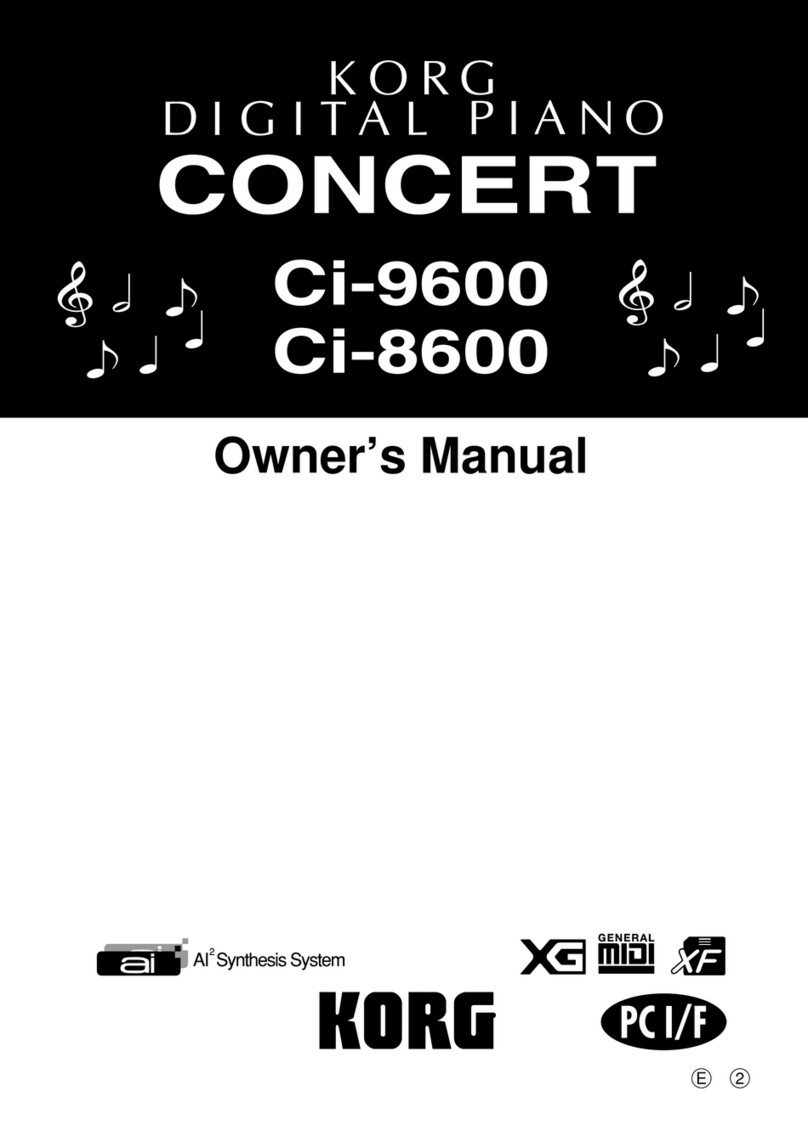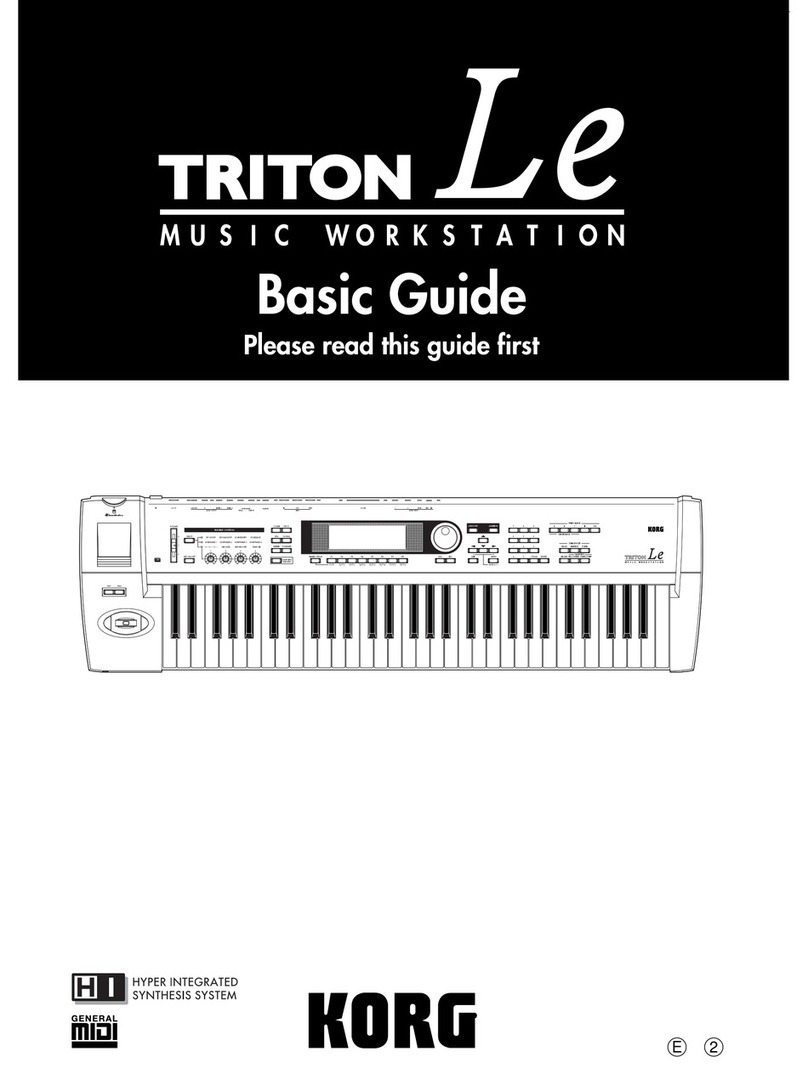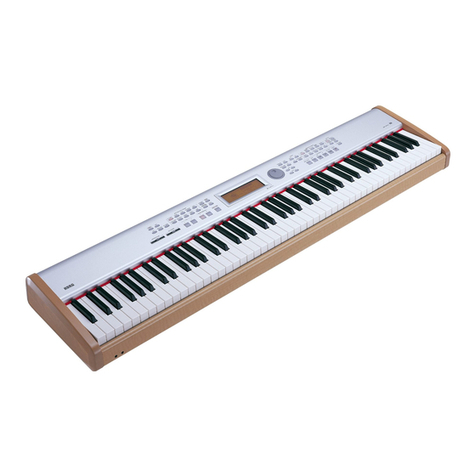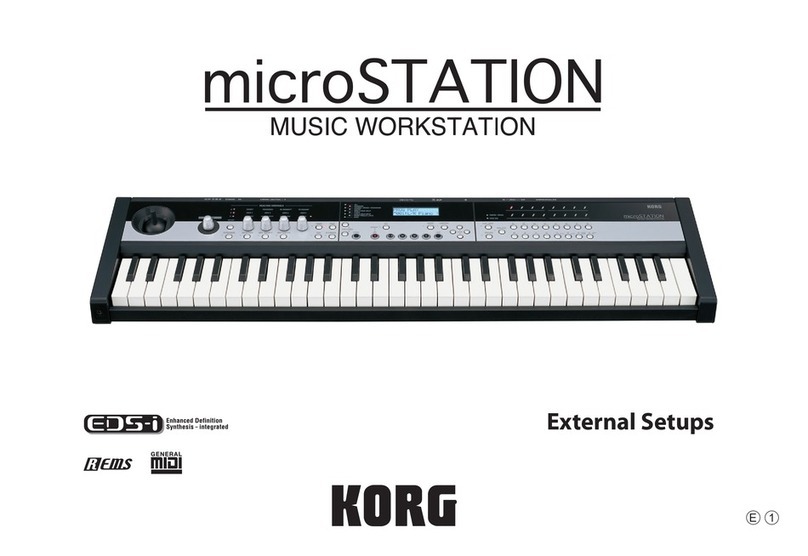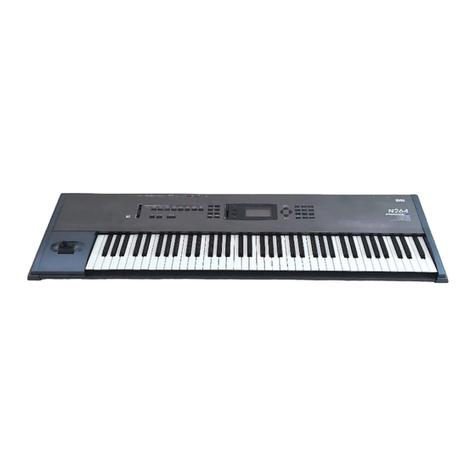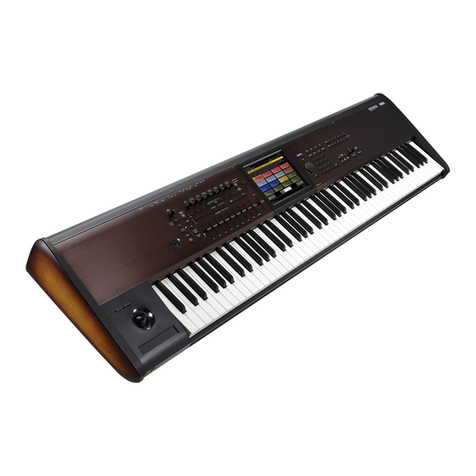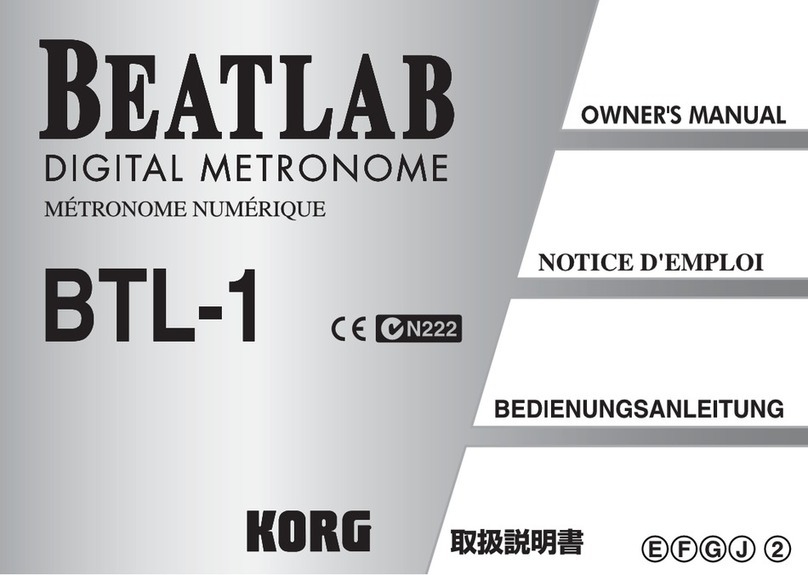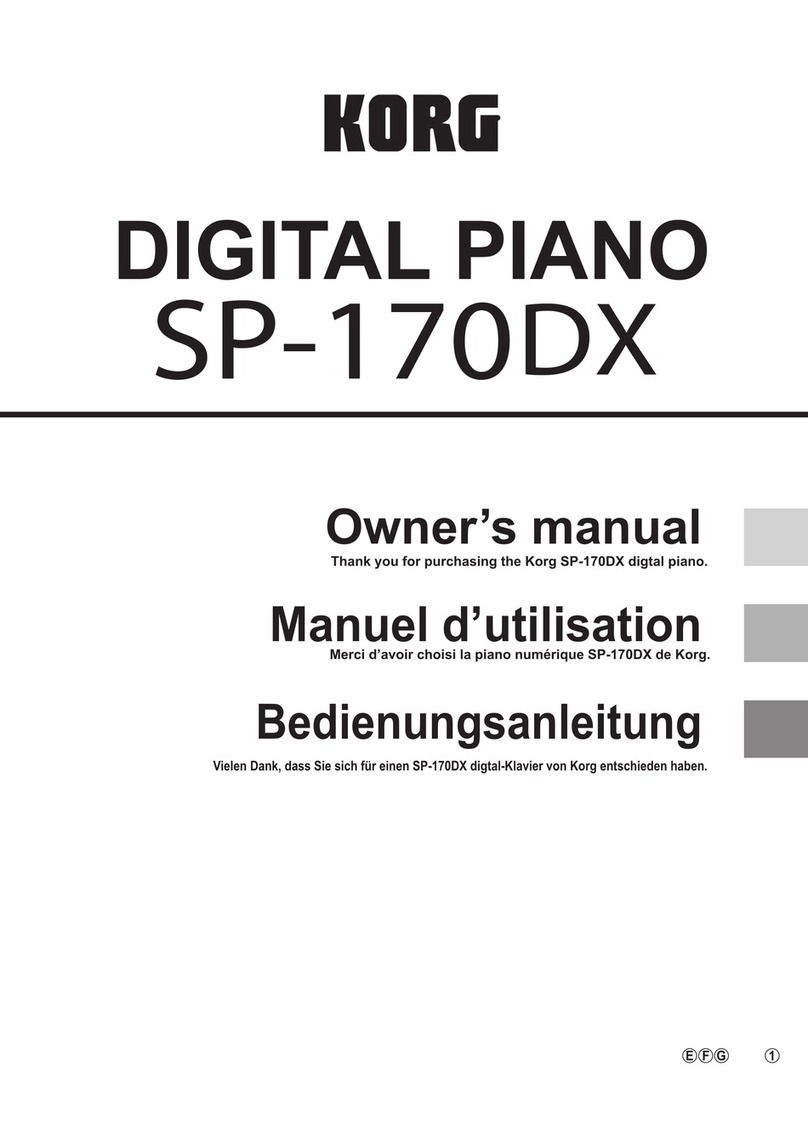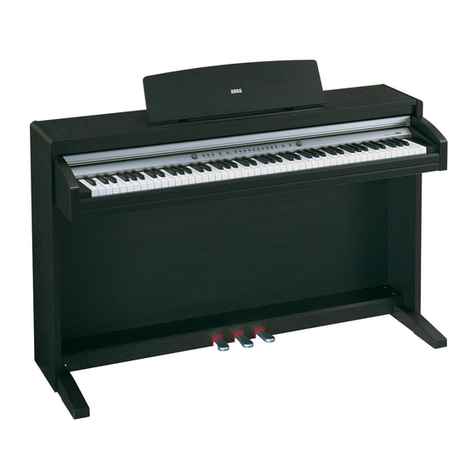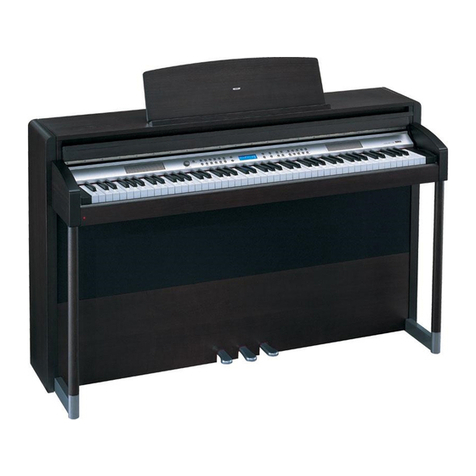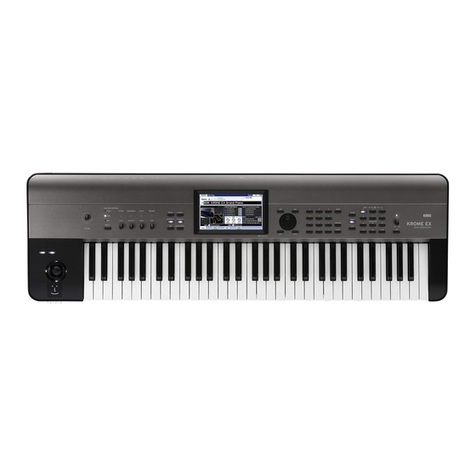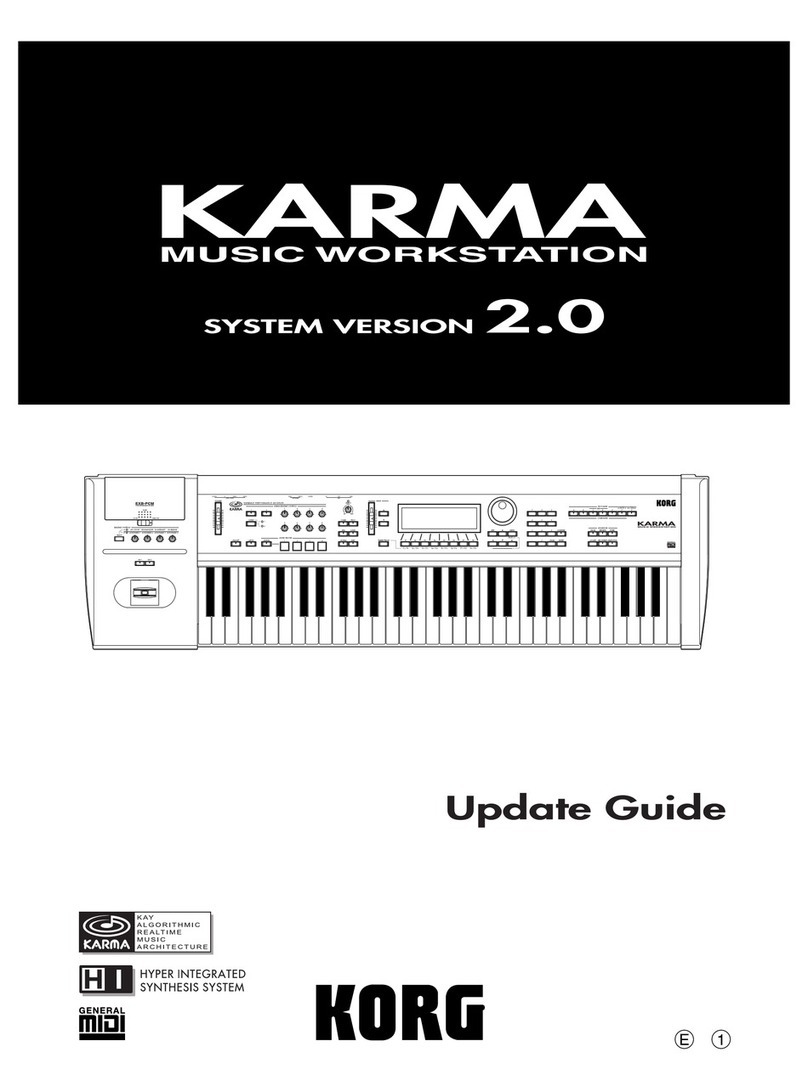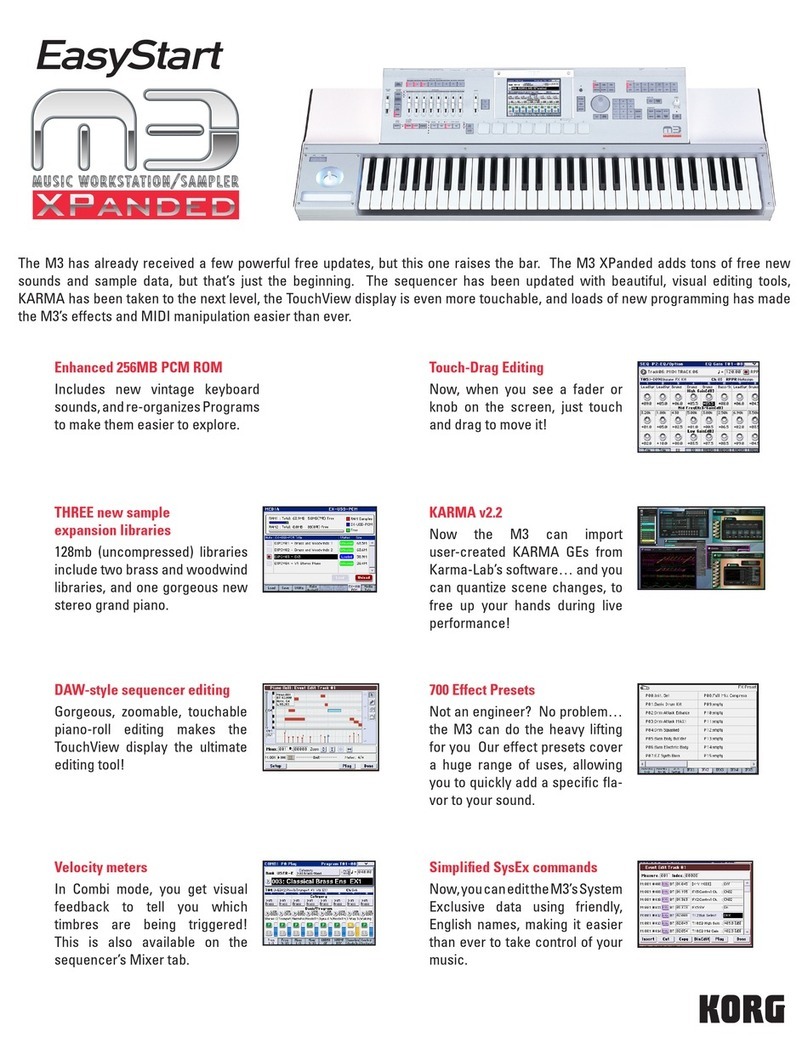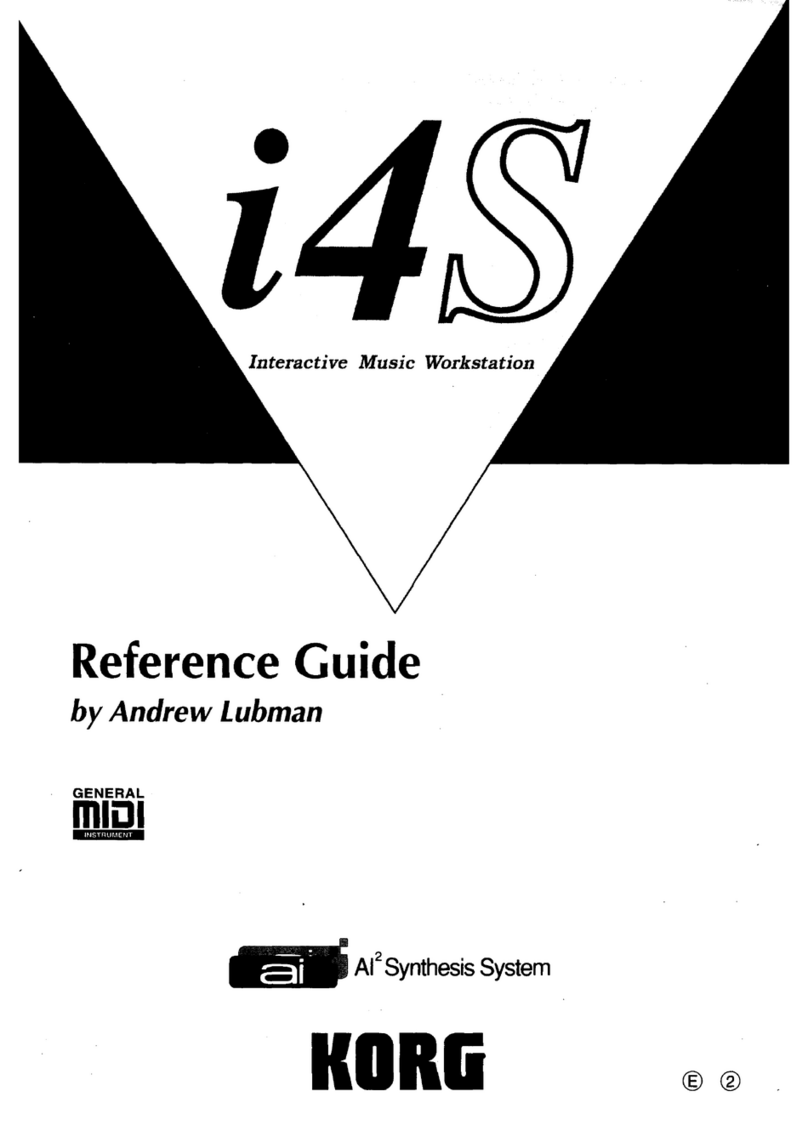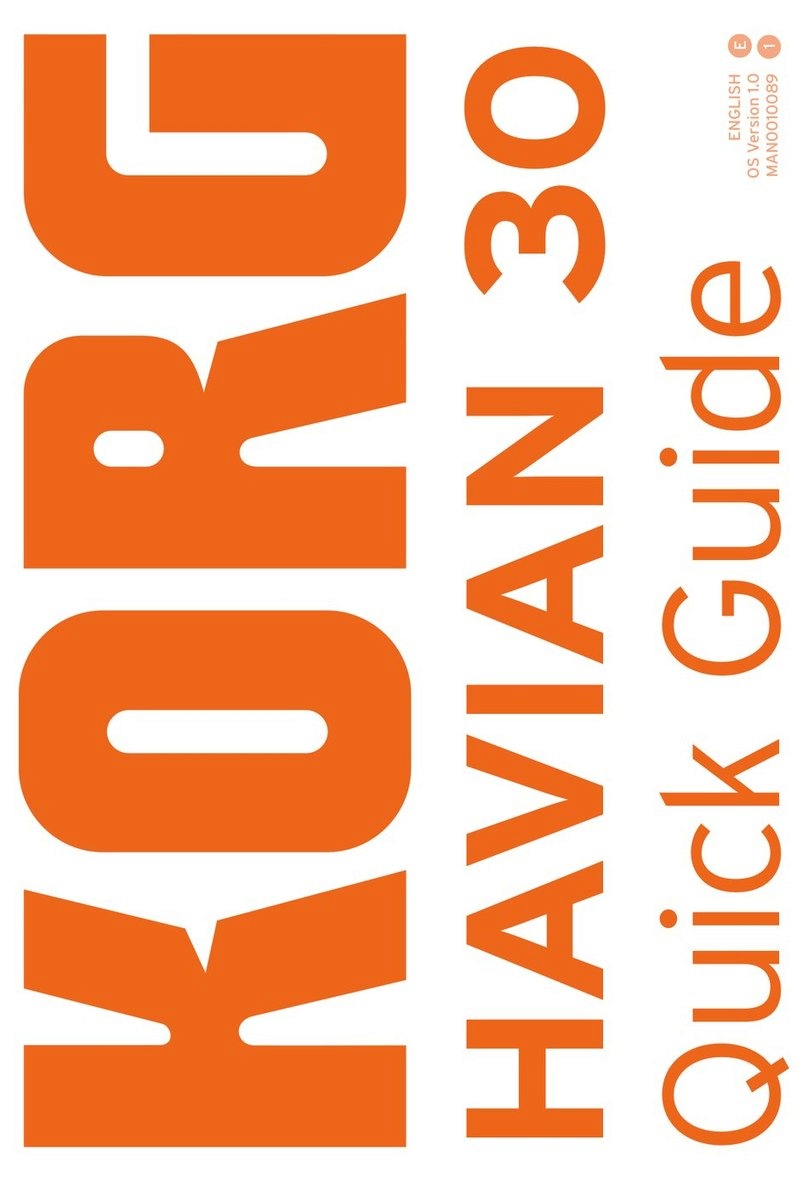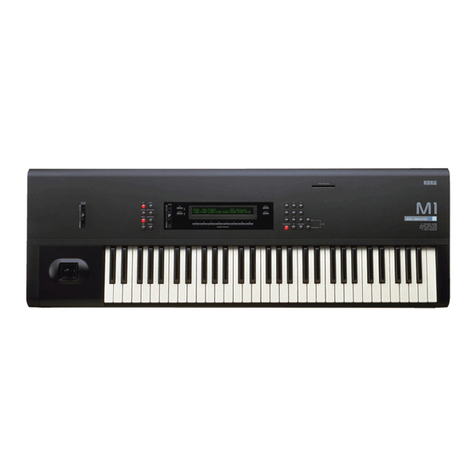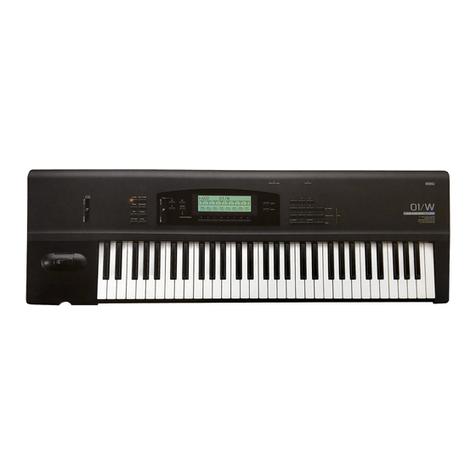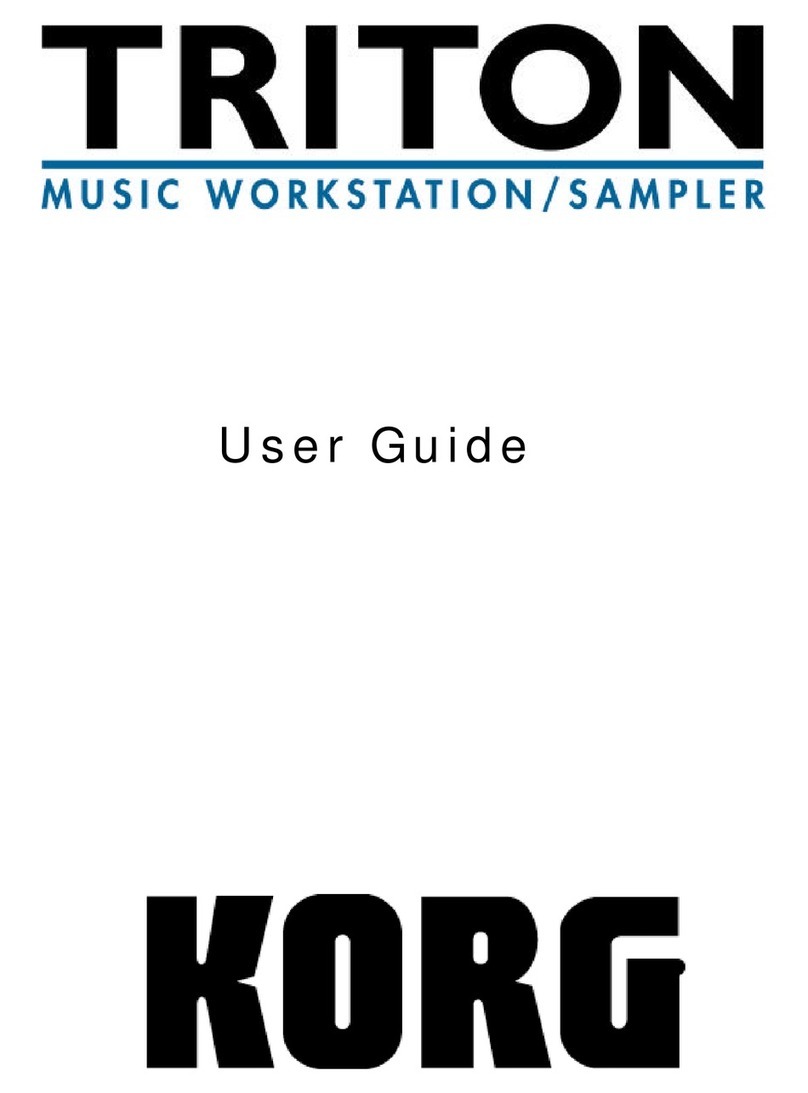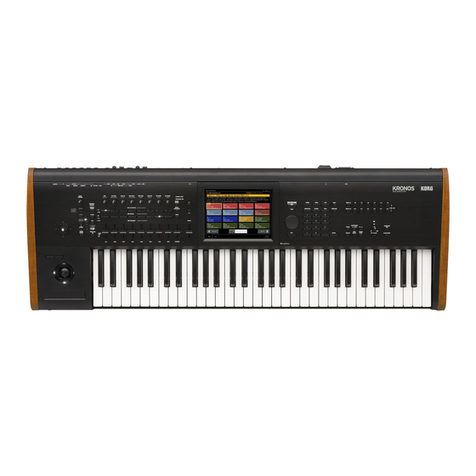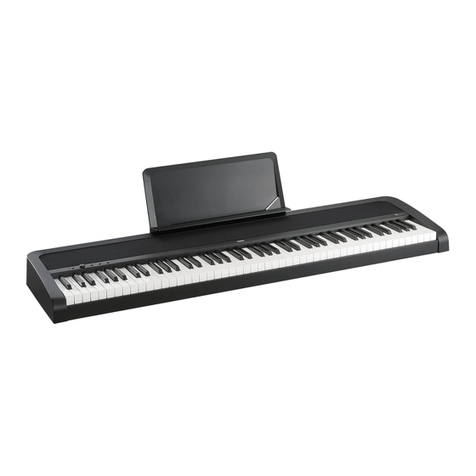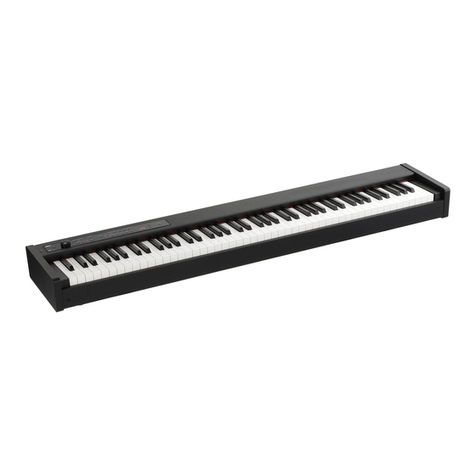
EnglishFrançaisDeutschEspañol
Main Features
En-5
Main Features
Nine World-Class Synthesis Engines
TheKRONOSfeaturesninecompletelydifferent
synthesisengines:
•Threeenginesdedicatedtothemostimportant
traditionalkeyboardinstruments:theSGX‐1
premiumacousticpiano,EP‐1MDSelectricpiano,
andCX‐3tonewheelorgan.
•Threedifferentvirtualanalogsynths,eachwith
tonsofprogrammabilityanditsowndistinctsonic
character:theAL‐1,MS‐20EX,andPolysixEX.
•Afull‐featuredsamplingandWaveSequencing
synthesizer,theHD‐1.
•TheSTR‐1physicalmodelingsynth,forcreating
bothtraditionaltimbresanduniquenewsounds.
•TheMOD‐7VPM/waveshaping/PCM‐mangling
powerhouse.
Eachisworthyofaseparateproductinitsownright,
buttheKRONOSbringsthemalltogetherintoasingle,
integratedmusicalinstrument.Therearenoseparate
cardstomanageorpolyphonybarriersbetween
them—andno“CPUovers”toworryabout.
Allofthesynthesisenginesshareacommontheme:
superiorsoundquality.You’lleasilyhearthesonic
benefitsofKorg’sproprietaryHD‐1low‐aliasing
sampleplaybackoscillators,patentedlow‐aliasing
analogoscillators,full‐bandwidthresonantfilters,and
extraordinarilyfast&smoothenvelopesandLFOs.
Optimized for live performance
SmoothSoundTransitions(SST)provideoverlapping
effectsandvoiceswhenyouchangesounds,withno
specialmodenecessary.
SetListsprovideeasyon‐screenselectionofPrograms,
Combinations,andSongsfromasinglescreen.Set
Listsalsomakeiteasytorearrangesoundsandsave
lyricsornotes,andprovideadedicatedgraphicEQon
themainoutputsforadjustingtoliveacoustics.
Effects
TheKRONOSincludes185differenteffectstypes,from
chorusesanddelaystoampmodels,avocoder,and
muchmore.Thesearen’tjustsimpleeffects,either;
thereareupto72parameterspereffect,andplentyof
real‐timemodulation.EffectPresetsletyoueasilystore
andrecallallofthesettingsforanindividualeffect.
Youcanuseupto16oftheseeffectssimultaneously,
with12InsertEffects,2MasterEffects(forreverb
sends,forinstance),and2TotalEffects(forstereobus
processing).Therearealso32dedicatedthree‐band
EQs—oneforeachMIDIandaudiotrack.
Finally,manyofthesynthenginesfeaturespecialized
signalprocessing.TheCX‐3,PolysixEX,andEP‐1
includededicatedeffects,andyoucanprocesslive
audiothroughtheAL‐1,MS‐20EX,STR‐1,andMOD‐7.
KARMA
KARMA(KayAlgorithmicMusicArchitecture)isan
astonishinglyflexibleinteractiveMIDIdatagenerator.
Muchmorethanasimplearpeggiator,itcombines
manydifferentalgorithmsintoapowerfulmusic
generationengine,collaboratingwithyouasyouplay.
Theseincludedrumandinstrumentgrooves,
gated/choppedeffects,complexcontrollergestures,
musicalphrasegeneration,arpeggiation,andmuch
more.Slidersandswitchesletyoureconfigureand
modulatethealgorithmsinreal‐time.
Sampling
Stereosamplingcapturesaudiofromanyanalogor
digitalinput,aswellasaudioCDs(viaaUSBCDR/RW
drive).Youcanalsosamplethrougheffects,resample
theoutputoftheKRONOSitself,orimportsoundsin
Akai,SoundFont2.0,WAV,andAIFFformats.
Audio and MIDI sequencer
16MIDItracksand16audiotracks(24‐bit,48kHz)let
yourecorddirectlyontheKRONOSwhenever
inspirationstrikes.YoucanimportandexportSMF
andWAVEfileswhenworkingwithotherplatforms.
TheDrumTrackprovidesbuilt‐indrumgrooves,
fueledbytheKRONOS’shigh‐qualitydrumsounds.
Computer Interface and USB Storage
USB2.0audioandMIDII/Oprovideasingle‐cable
connectiontocomputerDAWs,andtheKRONOS
Editorsoftwareletsyoueditsoundsdirectlyfromyour
computer.Youcandownloadthemostrecentsoftware
anddriversfromhttp://www.korg.com/kronos.
TwoUSB2.0A‐typeconnectorsarebuilt‐in,makingit
easytoexpandyourstorageviaexternalharddisks,
removabledisks,flashmedia,andsoon.
Superb Musical Interface
HighlightedbyalargecolorTouchViewLCDdisplay,
theKRONOSfeaturesavastarrayofassignable
physicalcontrollers—sliders,knobs,joysticks,ribbon,
andswitches—alldesignedtoprovideeffortless,
supremelymusicalcontrolatyourfingertips.The
context‐sensitiveonlinehelpsystemmakesthe
manualsavailablerightontheinstrument’sdisplay.
TheKRONOS73‐keyand88‐keymodelsfeaturesthe
RH3(RealWeightedHammerAction3)keyboard,
whichreplicatesthetouchofanacousticgrandpiano
withheavieractiononthelowerkeysandlighter
actioninthehigherranges,respondingtoevery
nuanceofyourplaying.

